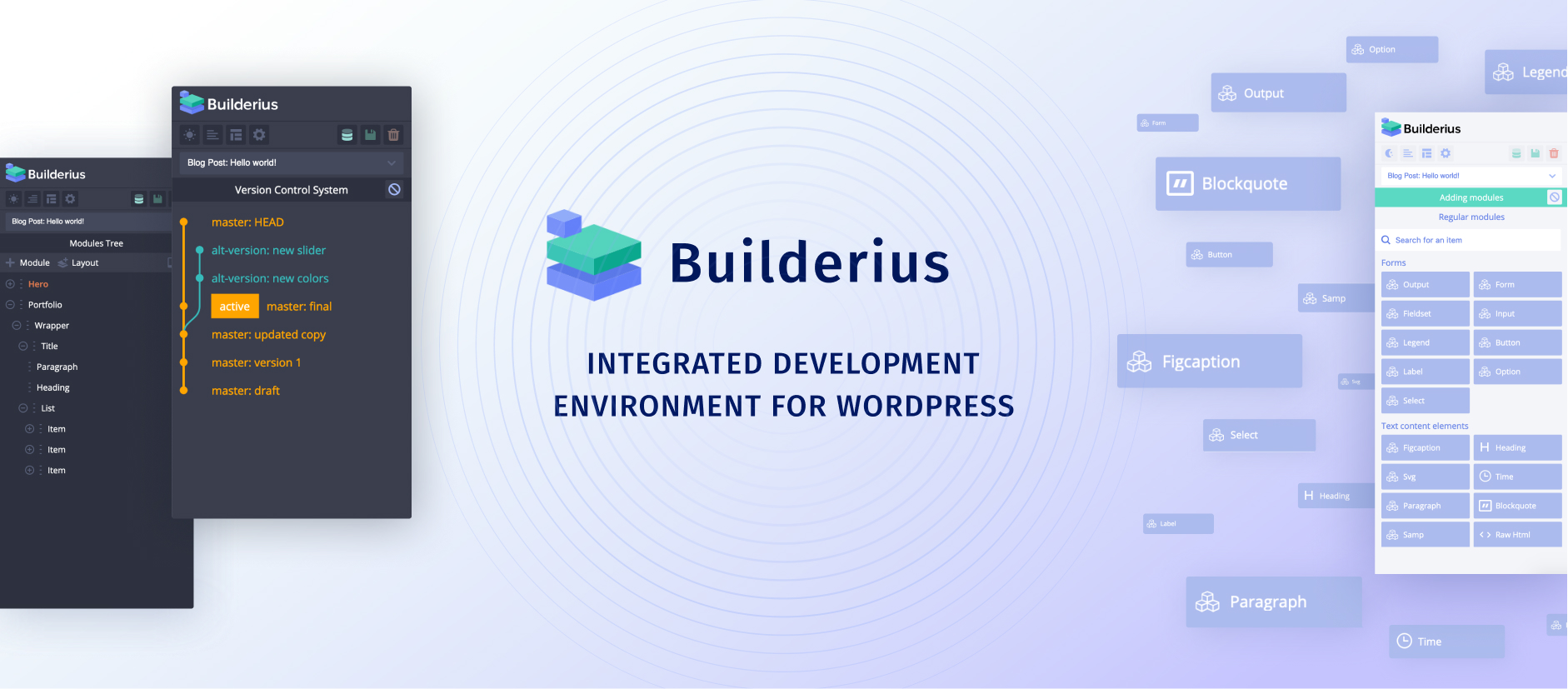
The new version of Builderius that is 0.9.3, has much more improvements than we planned before. This is a conceptual upgrade of our idea about what a site builder for WordPress should be. Yes, Builderius is a site builder now, not a page builder. The difference stems from how you create, apply, and manage templates and how the templates are stored inside DB.
Builderius is a plugin that allows creating a design on a blank canvas. However, it does not disable the current site’s theme altogether. Builderius templates override specific pages. It works perfectly well, having some pages designed in Builderius and others having the theme’s design.
Our plugin does not modify the original content. Posts are posts, and pages are pages, with their post title, content, featured image etc. Builderius does not replace the original post’s content with the plugin’s rendered HTML.
Builderius has native support for CSS custom properties. It is possible to create as many as you need CSS variables, add them to modules, save with template, and have CSS variables saved as global settings for using them in any template.
Builderius is the first site builder that has native support of GraphQL. Using GraphQL, it is possible to access different data with a single request to DB. Moreover, any additional queries to DB are synchronised with the original ‘$wp_query’ of WordPress. Instead of making new queries, its data is returned to keep the site as performant as possible.
Each Builderius module produces exactly one HTML tag with its attributes and content. The plugin does not pollute its HTML template with excessive ‘id’ tags etc. It is always a minimal set of three classes attached, and that’s it.
Currently, we have a free version that is limited to posts and pages. We will add support of CPT and archives in the future versions of the plugin. We already have added custom breakpoints and conditional displaying of modules on the front end in our roadmap.